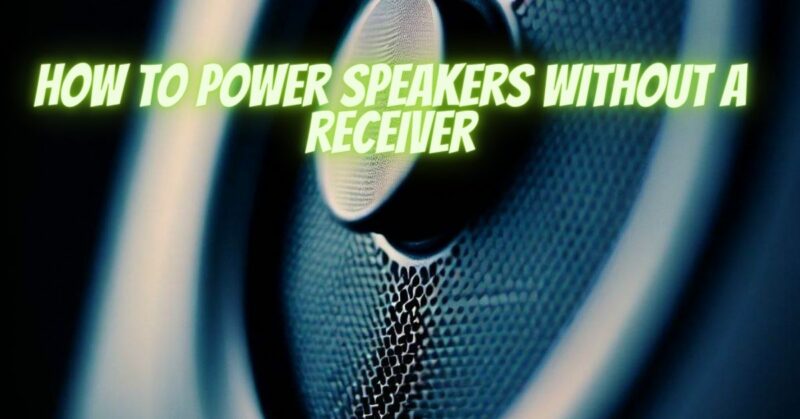If you have standalone speakers and want to power them without a receiver, there are alternative methods available. Whether you’re looking to create a simple setup or repurpose existing audio equipment, this guide will provide you with options for powering your speakers without a traditional receiver. By following these steps, you can enjoy your speakers with a dedicated power source and flexibility in audio playback.
Method 1: Using an Amplifier
- Select an Amplifier: Choose an amplifier that matches the power requirements of your speakers. Look for one with sufficient wattage and the appropriate impedance rating to ensure compatibility.
- Connect the Amplifier: Use speaker wire to connect the amplifier’s speaker outputs to the corresponding inputs on your speakers. Pay attention to polarity, ensuring the positive and negative terminals match.
- Audio Source: Connect your audio source, such as a smartphone, computer, or audio player, to the amplifier using an appropriate cable (e.g., RCA, 3.5mm, or optical) based on the available inputs on the amplifier.
- Power the Amplifier: Plug the amplifier into a power outlet and ensure it is turned on. Adjust the volume and other settings on the amplifier as desired, following the manufacturer’s instructions.
Method 2: Using a Powered Mixer
- Choose a Powered Mixer: A powered mixer combines an amplifier and mixer into a single unit. Select a powered mixer that matches the power requirements of your speakers and offers the necessary inputs and controls.
- Connect the Powered Mixer: Use speaker wire to connect the powered mixer’s speaker outputs to your speakers, ensuring proper polarity.
- Audio Source: Connect your audio source to the powered mixer’s input channels using the appropriate cables (e.g., XLR, 1/4-inch, RCA).
- Power the Powered Mixer: Plug the powered mixer into a power outlet and turn it on. Adjust the volume and other settings on the mixer to achieve the desired sound.
Method 3: Using Powered Speakers
- Select Powered Speakers: Powered speakers have built-in amplifiers, eliminating the need for a separate amplifier or receiver. Choose powered speakers that match your audio requirements and offer the necessary inputs (e.g., RCA, 3.5mm, Bluetooth).
- Connect the Audio Source: Connect your audio source directly to the powered speakers using the appropriate cables or wireless connectivity options available on the speakers.
- Power the Speakers: Plug the powered speakers into a power outlet and turn them on. Adjust the volume and other settings on the speakers, if available, to achieve the desired sound.
Important Considerations:
- When selecting an amplifier, powered mixer, or powered speakers, ensure that their power output and impedance ratings are compatible with your speakers to avoid damaging them.
- Always follow the manufacturer’s instructions for proper connection, setup, and usage of the audio equipment.
- Pay attention to signal levels and adjust volume and gain controls appropriately to prevent distortion or clipping.
- Ensure that all power connections are made to a suitable power source and observe electrical safety precautions.
- Experiment with different audio sources and settings to achieve the best sound quality and performance from your speakers.
Conclusion:
Powering standalone speakers without a receiver is possible by utilizing alternative methods such as amplifiers, powered mixers, or powered speakers. By selecting the appropriate equipment, making proper connections, and following the manufacturer’s instructions, you can enjoy your speakers with dedicated power and flexibility in audio playback. Whether you choose an amplifier, powered mixer, or powered speakers, these options provide alternatives to traditional receiver-based setups, allowing you to create a customized audio system to suit your needs.

